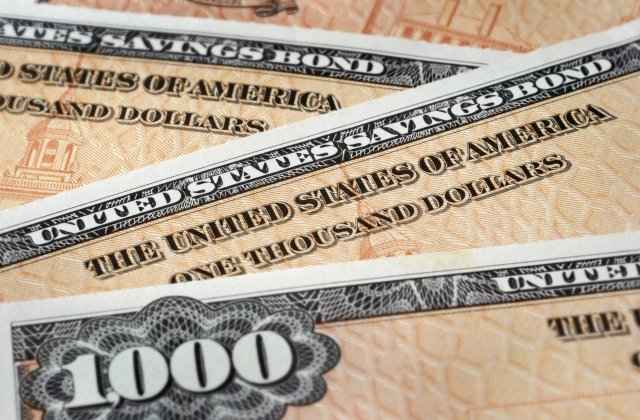
After months of beating the drums, the Federal Reserve finally raised short-term interest rates – the first such increase in years. And the sky didn't fall.
But as the Fed proceeds with its promised pattern of slow, deliberate rate hikes to head off inflation, what does it mean for the long-suffering fixed-income investor who has endured years of puny interest earnings? Will banks and bonds suddenly become more generous? Or will rising interest rates take as they give, undermining the value of the stingy securities bought in recent years?
"I do not think this is a dramatic turning point," says Scott Carty, president of DC Capital management in Detroit. "Interest rates have not changed in seven years. We were due for an increase. I think you will see this help the economy in the long run. Retirees continue to wait for more increases that will benefit their savings and CD rates."
Believing that the economy is strengthening, the Fed raised the fed funds rate , which banks charge each other for overnight loans, to a target of 0.25 to 0.5 percent, after leaving it at virtually zero since late in 2008. Low rates kept borrowing costs down, allowing businesses and individuals to spend more to stimulate the economy. Now that employment numbers and economic growth are improving, the Fed says it will gradually tighten the money supply to reign in spending that could make prices rise too fast.
But the small increase announced Dec. 16 still leaves the fed funds rate very low. It was more than 5 percent as recently as 2007. And long-term rates – the kind that influence mortgages, for instance – are set by the marketplace, not the Fed, so it will take awhile to see how all this plays out.
Among those watching are the beleaguered fixed-income investors. Although they typically prize safety over returns, the price of safety has been pretty high in recent years. The 10-year U.S. Treasury note, for instance, yields a scant 2.2 percent, and the five-year certificate of deposit averages only 1.4 percent.
Now yields may start inching up, but probably not fast enough to upend the markets.
"Life will continue on as usual," says Ryan A. Hughes, founder of Bull Oak Capital, a financial advisor in San Diego. "The bond market is forward-looking, and the rate increase was priced in before the Fed made their announcement." He sees nothing in the economic data to suggest the Fed will have to speed the process.
Samuel E. Rines, economist and portfolio manager for Chilton Capital Management in Houston, also expects change to be slow. "Interest rates, especially on the long end, are likely to remain relatively low for an extended period of time," he says. "This is partially because the U.S. economy could tip near or into recession with a sharp jump, but also because the Fed is going to be hypervigilant."
Unfortunately, there is a downside to rising yields: They can undermine the value of older securities. Imagine that a few years ago you'd paid $1,000 for a bond yielding 2 percent, or $20 a year. Now suppose that sometime later $1,000 could buy a bond yielding 4 percent. Now that older bond might be worth only $500, the price at which its $20 in annual earnings would equal the 4 percent paid by the newer bond.
In real life, it's more complicated, and the price drop wouldn't be quite that steep, but bondholders do stand to lose when rates rise. (It's the opposite when rates fall, as older, more generous bonds become more valuable.)
Investors can avoid this peril by holding their bonds to maturity, when they will get back the bond's face amount, but that can mean suffering with years of below-market interest earnings.
So what should investors do?
"I would not lock into a long-term bond at this point," Carty says, citing the risk of more rate increases to come. "By jumping into a long-term bond, you will lock in today's interest rates and miss out on the expected 1 percent increase for next year."
Chris Larkin, managing director of fixed income at TD Ameritrade, cautions, however, that postponing a bond purchase until rates are higher means forgoing income in the meantime. "The longer your money sits static, the higher the rates will have to grow to make up for what you missed while waiting," he says.
The solution, though imperfect: Buy bonds with shorter maturities. They don't pay as much, but your money won't be tied up. And short-term bond prices are less sensitive to interest rate increases. The two-year Treasury yields about 1 percent.
Many investors get into bonds through mutual funds , allowing the pros to pick and choose the individual bonds. Rising rates have the same effect on bonds in the fund portfolio, of course, but there's an additional problem. Fund managers can't simply hold onto bonds until maturity, because they must maintain the average time to maturity promised investors. Values of long-term bonds are especially hard-hit by rising rates, since the investor will suffer with the low yields for many years.
"It's important to understand whether your bond mutual fund consists of short-term bonds, intermediate or long-term bonds," Carty says. "Short-term bond funds will hold up better over the next year's interest rate increases."
Larkin notes that interest-rate risk need not be a major concern for bond fund investors in it for the long haul, because the fund will gradually sell older bonds as their maturities get too short and use the proceeds to buy newer bonds with higher yields. "Over time, long-term investors could ideally recoup short-term losses with the higher-yielding bonds that are in their bond funds," he says.
To assess the risk from rising rates, look up the fund's "duration," a number expressed in years. A longer duration means more risk. A fund with a five-year duration, for instance, can lose 5 percent of its value if prevailing rates rise by one percentage point.
"Bond investors should be shortening the duration of their bond portfolios at this time, not lengthening them," says Robert R. Johnson, president and CEO of the American College of Financial Services in Bryn Mawr, Pennsylvania. "I believe there is much more risk in the bond market than in the stock market."
Another strategy, says Michael Loewengart, vice president of investment strategy at E*Trade, is to take on more risk . "Including bonds in your portfolio with higher yields, and correspondingly lower credit ratings, than Treasury bonds – such as corporate bonds – may help offset the negative effects of rising interest rates," he says. Certain fixed-income holdings tend to do better as interest rates rise, he adds, citing Treasury inflation-protected securities, premium bonds, short-term government and corporate bond funds, ultrashort bond funds and high-yield bond funds.
If the Fed raises rates slowly, money market funds and accounts, as well as savings accounts and certificates of deposit, are not likely to become significantly more generous anytime soon.
"Banks have funds to lend, so they don't have to raise savings rates to attract more funds," Johnson says. "We have already seen this, in that many of the major banks have raised their prime rates that many loans are tied to, but they did not raise rates paid to depositors."
Mortgages and other loan rates are likely to drift up, he says. Borrowers will be wise to choose fixed-rate loans over variable-rate loans that will become more expensive over time.
Compare Offers
Compare Offers



Post a Comment